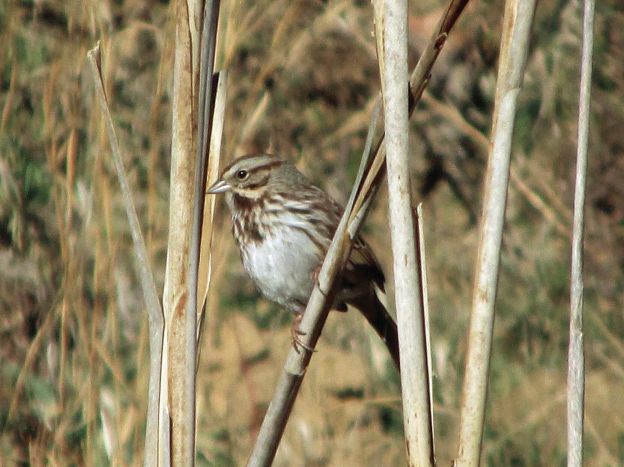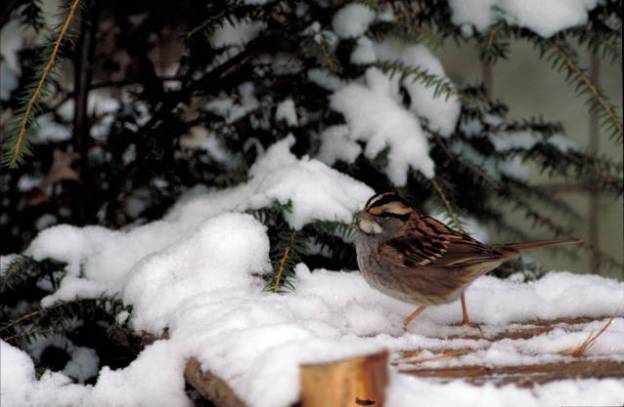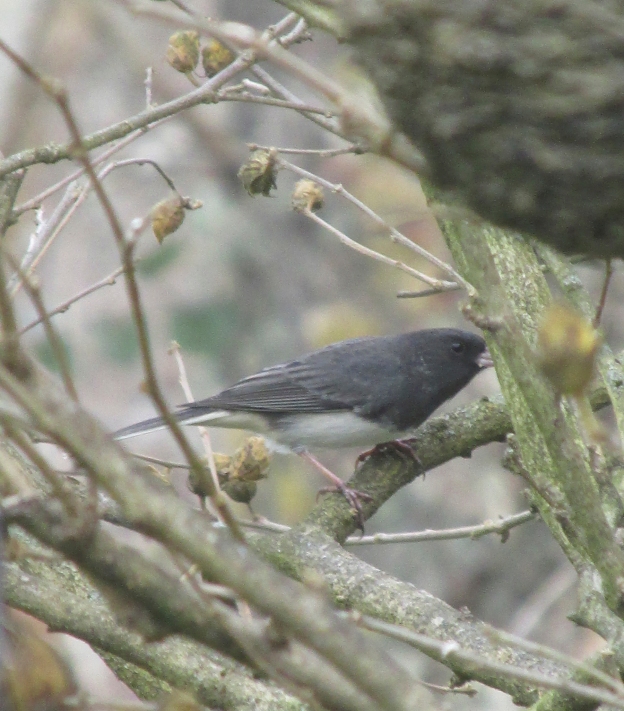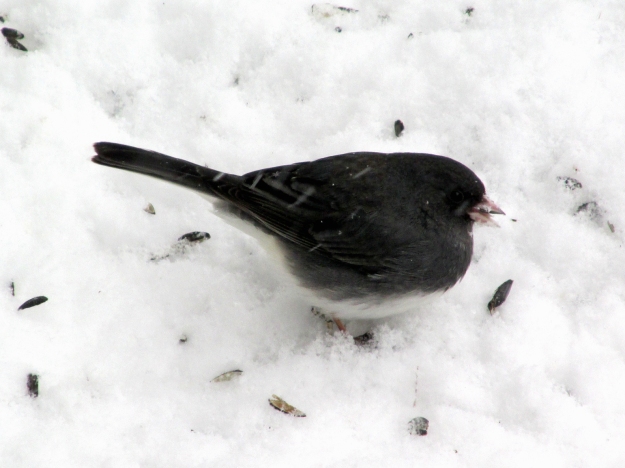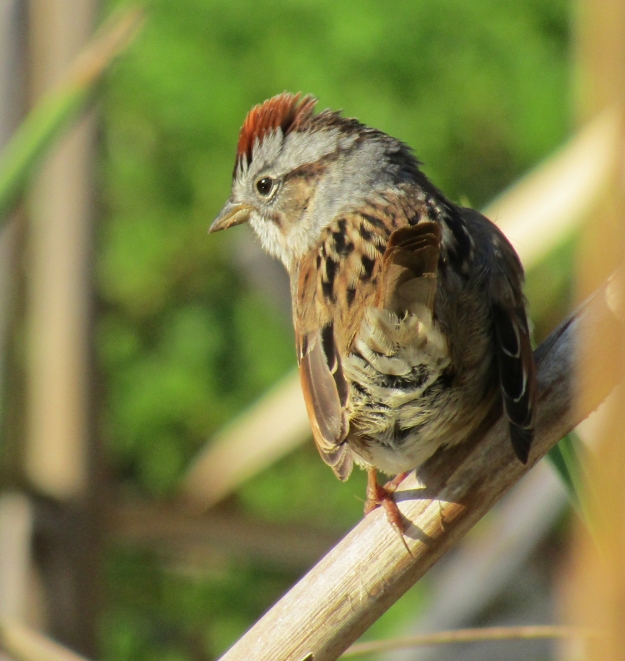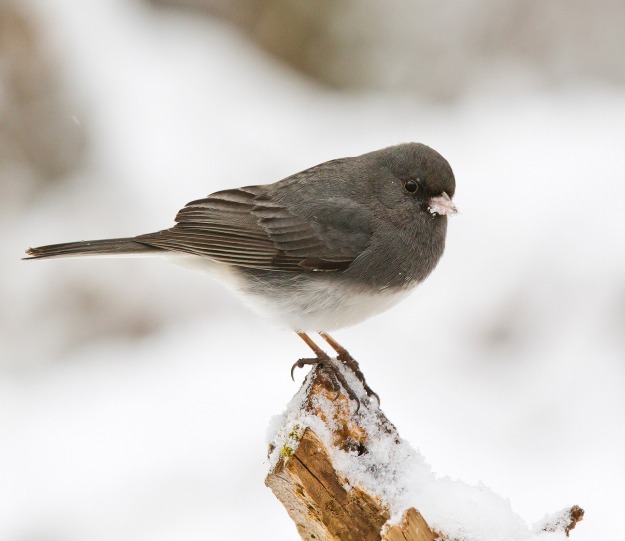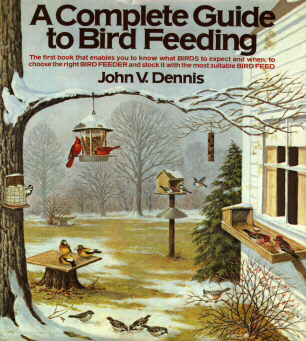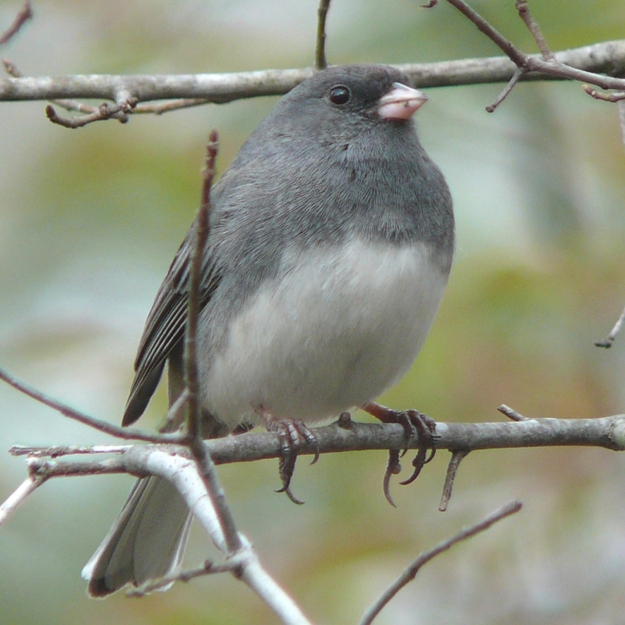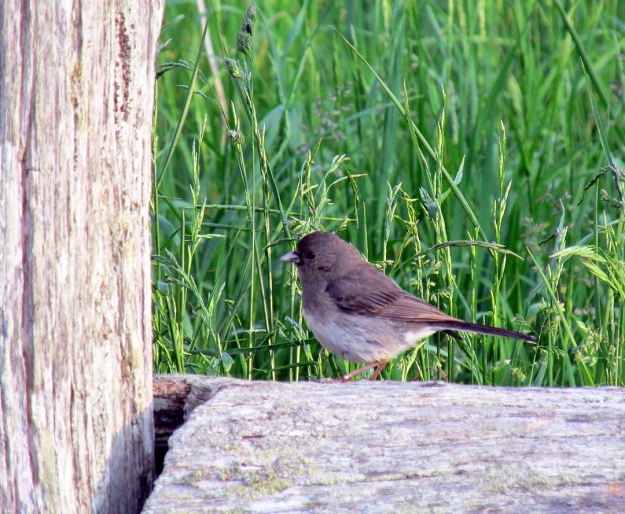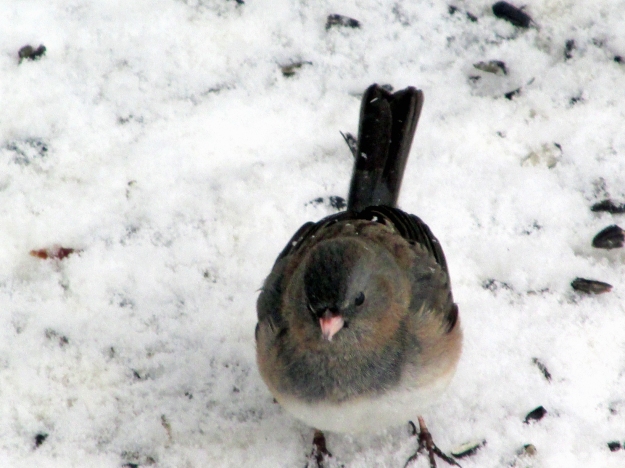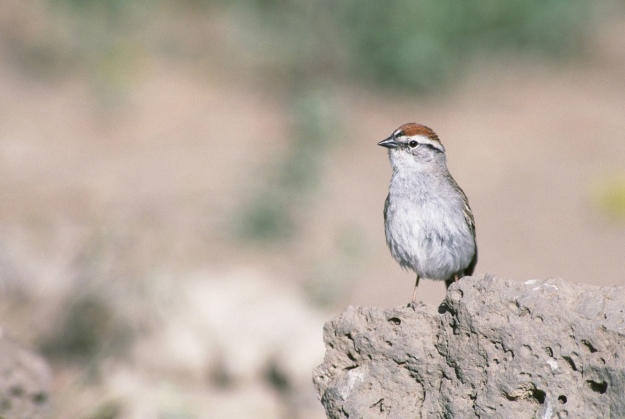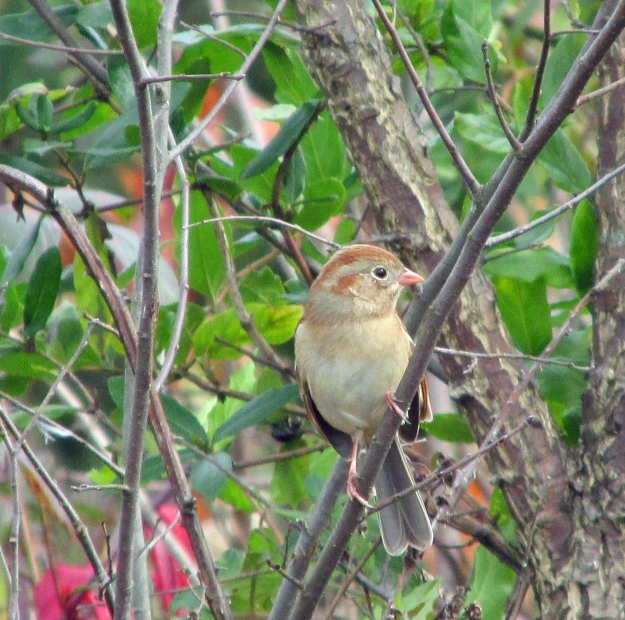
Photo by Bryan Stevens • Song sparrows show a stripe breast that comes together in a large, central dot. This field mark is diagnostic in distinguishing the song sparrow from other little brown birds.
Recent cold and snow meant elevated activity at my bird feeders. Among the birds flocking to my feeders were several species of sparrows, including white-throated sparrow, song sparrow and dark-eyed junco.
Other sparrows in the region include field sparrow, chipping sparrow, swamp sparrow and white-crowned sparrow.
The white-crowned sparrow and the white-throated sparrow are both members of the genus known as Zonotrichia, which refers to two ancient Greek words for zone and hair, which refers to the pattern of streaks on the backs of these five sparrow species. The Zonotrichia sparrows belong to a large group of birds known as Passerellidae, or American sparrows, which also includes birds such as juncos, towhees and brush finches.
The song sparrow, unlike some of the other sparrows that made appearances at my feeders, is a year-round resident in the region.
Song sparrows, according to the website All About Birds, eat many insects and other invertebrates in the summer, as well as seeds and fruits in all seasons.
All About Birds also makes note of the fact that this widespread sparrow occurs in a variety of habitats, including tidal marshes, arctic grasslands, desert scrub, pinyon pine forests, aspen parklands, prairie shelterbelts, Pacific rainforest, chaparral, agricultural fields, overgrown pastures, freshwater marsh and lake edges, forest edges and suburbs.
The scientific name for the song sparrow is Melospiza melodia, which translated from the Greek means “melodic song-finch.” It’s an apt name for a persistent, enthusiastic singer. The commonplace nature of the bird also makes it easy to learn to detect and identify the bird by its song alone.
According to All About Birds, male song sparrow use song to attract mates as well as defend territory. Laboratory studies have shown that the female song sparrow is attracted not just to the song itself, but to how well it reflects the ability of the male to learn.
Other sparrows produce well-known songs. Many Americans render the song of the white-throated sparrow as “Ol’ Sam Peabody, Peabody, Peabody.” For those living north of the border, however, the white-throated sparrow sings “O Canada, O Canada, O Canada.”
No matter how you translate this sparrow’s song, it’s a sweet and welcome addition to the spring aural landscape.
Some of the more descriptive names for American sparrows include orange-billed sparrow, white-eared ground sparrow, green-backed sparrow, olive sparrow, cinnamon-tailed sparrow, five-striped sparrow and golden-winged sparrow.
Many sparrows prefer to forage for food on the ground. It’s often helpful to purchase a supply of millet seed. When filling feeders with sunflower seeds, scatter a couple of handfuls of millet seed on the ground beneath the feeders or at the edge of a brushy area. Sparrows like to have quick access to dense cover, so they will feed more securely if the scattered seeds are within quick reach of shelter.
Although they are fairly common winter visitors in the region, white-throated sparrows, dark-eyed juncos and white-crowned sparrows depart the area in spring.
With the song sparrow, it’s not difficult to realize why the sparrows are often lumped together under the categorization of “little brown birds.”
The adult song sparrow has brown upperparts with dark streaks on the back and are white underneath with dark streaking and a dark brown spot in the middle of the breast. That dark spot is often considered a field mark that makes identifying this bird easier in the field. The song sparrow has a brown cap and a long brown rounded tail. Their face is gray with a brown streak through each eye.
White-crowned sparrows, in contrast to the song sparrow, are medium-sized birds with considerable gray on the breast and back of the neck. Adults of both sexes are adorned with bold black and white head stripes, which gives this bird its common name. Thanks to this distinctive feature, this sparrow truly stands out among a family of rather drab birds.
The white-crowned sparrow is known by the scientific name Zonotrichia leucophrys, which translates into English from Ancient Greek as “white eyebrow.”
Sparrows can be a challenge for beginners, but the winter season is a good time to learn how to differentiate these feeder visitors. The lure of food makes it possible to draw the sparrows in close for observation.
The sparrows will eat a variety of seeds, but I’ve had the best luck with black oil sunflower seeds. Just keep in mind that sparrows are ground feeders. It pays to also scatter some seeds directly on the ground for them. They will scratch and kick with their legs as they forage for the seeds we provide them during wintry days.
Once spring arrives, song sparrows will remain in your yards and gardens. They nest several times a season, so there’s the added opportunity of watching these little birds tend their young. They’re never going to compete with our more colorful birds, but song sparrows make great neighbors.
•••
Mary Anna Wheat will present a program on a trip to Arizona, Utah, Colorado and New Mexico in late September and early October 2023 at the next meeting of the Elizabethton Bird Club.
She traveled with a friend and former co-worker from Sept. 19 to Oct. 16, 2023, in those four states. Their focus was on scenery, archeology (Wheat’s friend is an archaeologist with experience doing archaeological work at Canyon de Chelly National Monument) and the annular solar eclipse. Birding was incidental, although Wheat noted that they saw or heard more than 60 species.
The club’s meeting will be held Tuesday, Feb. 6, at the Northeast State Community College’s Elizabethton campus at 7 p.m. The front desk can direct visitors to the meeting room.
•••
Bryan Stevens has been writing about birds and birding since 1995. Email him at ahoodedwarbler@aol.com to ask a questing, share a sighting or make a comment.

